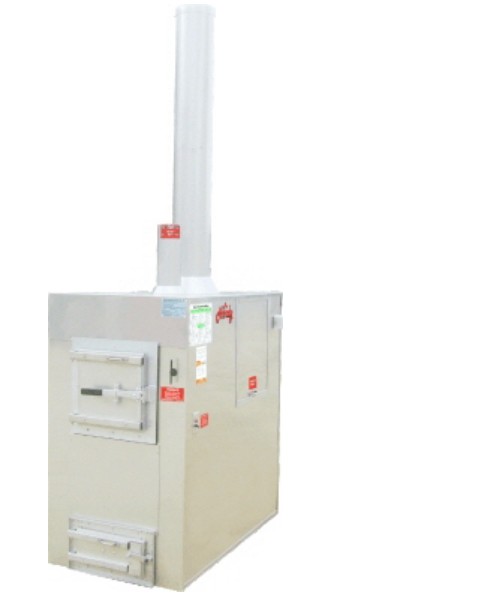By Joshua Beasley, Marketing & Advertising for Honest Abe Log Homes
An ever evolving but long-standing issue has been the search for efficient and cost-effective alternative energy sources for homes. Some owners do so to offset their utility bills, others to go completely off the grid and become energy independent. In the log home industry, we’ve seen our share of customers who incorporate a variety of non-traditional sources of energy including; geothermal, solar, and wind. Absent from that list is arguably one of the most popular, which is exterior wood burning stoves.
Springing up in the late 1970s and early 80s, two of the most prominent names in wood burning stoves and boilers are Taylor and Hardy Stoves. Honest Abe Log Homes just happens to have two well qualified people able to weigh in on the subject. Ronnie Bagwell, independent dealer of Honest Abe Log Homes, has also been a dealer and customer of Hardy Stoves for over two decades. Jackie Cherry, Vice President of Honest Abe, has owned and operated a Taylor stove to heat his log home for just about as long.
While there are differences between the two brands, such as the type and quality of steel and overall design, the two company’s products basically do the same thing. They provide safe, efficient heat for your home and also aid in heating your homes hot water supply. This article’s objective isn’t to promote one over the other, but to educate customers on a popular alternative energy source.
“What will it cost me?” That’s always the first question, especially when it involves a product such as this. Ronnie said that a stove for an average home would likely run around $6,500, not including labor which can vary based on the home.
A stove works by heating water with a fire located outside of your home, which is then pumped into the residence. A heat exchanger allows your home’s heat and air unit to circulate the warmed air. The cooled water is then cycled back to the stove to be reheated. The system also heats a home’s water, which is a significant cost savings. This is done by allowing cold water from the home’s source to flow through a closed copper coil located within the stove. The heated water is then fed directly into the electric or gas water heater inside. Since the incoming water is already heated, the water heater’s only job is to maintain the temperature, not to heat up cold water.
Jackie believes this is a great option for many log home owners, because so many build their home on farmland or in wooded areas. Jackie noted that he doesn’t pay for wood, and hasn’t cut down a living tree in years. Instead, he looks for standing dead or fallen trees on his land, then harvests them as fuel for his stove. For the past three months, each of his electric bills has been less than $80. “I only have to fill my stove once per day as long as the temperature stays above 30 degrees Fahrenheit,” commented Jackie, which was echoed by Ronnie.
“There’s a wide variety of sizes as well,” stated Ronnie. “A 2,500 square foot home would be fine with a 120,000 BTU stove, but you can go much bigger if you want.” The stoves even have the capability of heating multiple floors or buildings by incorporating more pumps and heat exchangers.
For more information on exterior wood burning stoves and to locate dealers, visit: Hardy (www.hardyheater.com), or Taylor (www.taylormfg.com).
Editors Note: Special thanks to Ronnie Bagwell and Jackie Cherry for contributing to this story.




